
Sarah Sze: Timelapse
Francine Prose ruminates on temporality, fragility, and strength following a visit to Sarah Sze’s exhibition Timelapse at the Solomon R. Guggenheim Museum, New York.
April 26, 2019
The inaugural presentation of Frieze Sculpture New York at Rockefeller Center opened on April 25, 2019. Before the opening, Brett Littman, the director of the Isamu Noguchi Foundation and Garden Museum and the curator of this exhibition, told Wyatt Allgeier about his vision for the project and detailed the artworks included.
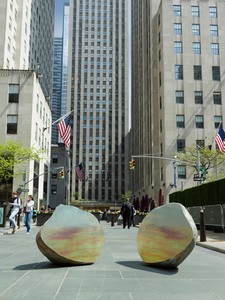
Sarah Sze, Split Stone (7:34), 2018, installation view, Frieze Sculpture New York, 2019. Artwork © Sarah Sze. Photo: courtesy Sarah Sze Studio
Sarah Sze, Split Stone (7:34), 2018, installation view, Frieze Sculpture New York, 2019. Artwork © Sarah Sze. Photo: courtesy Sarah Sze Studio
Wyatt AllgeierBrett, how did the offer to curate the 2019 edition of Frieze Sculpture New York come about?
Brett LittmanI received a call from Loring Randolph [the artistic director for Frieze New York] in December. She asked whether—given the fact that Isamu Noguchi’s News [1940] is a major part of the Rockefeller Center campus—I would be interested in curating the inaugural Frieze Sculpture New York exhibition. The opportunity to contextualize Noguchi among other contemporary sculptures was highly appealing, so I accepted the offer.
WATell me more about News and Noguchi’s approach to this commission for Rockefeller Center.
BLNoguchi received the commission in 1938. It was his first commission in New York City, so it was quite important to him. Given his relationship with Diego Rivera and Frida Kahlo, who he had a fairly torrid affair with in Mexico in 1935–36, he was very well aware of the censorship of Rivera’s Man at the Crossroads [1934] by Nelson Rockefeller. Many of Noguchi’s earlier proposals for commissions, through the WPA and other public works projects in the 1920s and ’30s, were rejected because his politics were pretty far left. He definitely was a socialist in regard to workers’ rights. Interestingly, he toned down the political nature of this proposal for Rockefeller Center, because he really wanted to win it.
The commission was from the Associated Press for some kind of bas-relief or mural outside the building at 50 Rockefeller Plaza. His proposal, what would become News, is a steel relief of five reporters getting a scoop. It is a meditation on mass media as it was at that time, really at its beginning stages, with the introduction of television technology, among other things. For Noguchi, it was about freedom of expression.
WAHow did you select the contemporary sculptures? Were Noguchi’s intentions with News part of your criteria for assessing the works?
BLWhen you work with an art fair, you have to work with galleries that are participating in the fair. We sent out a letter to these galleries, in which I described the general parameters of the project. I was not interested in the monumentality of what’s gone on there before; I really wanted to do something that was more human-scale, had some gender balance, and was global. Instead of thinking about it as a presentation of huge sculptures that I would just place on the plaza in front of 30 Rock or on Fifth Avenue, I really wanted to think about how I could use the history and texture of this particular architectural campus and place the sculptures in dialogue with existing historical elements.
As I began to look through the proposals from the galleries, it was interesting to see that many of the artworks seemed to be political in nature. There’s a lot of encoded critique of neoliberalism, capitalism, race relations, image making, and the dissemination of information. That said, of course there are other works with more strictly formal concerns.
WAI understand that you will be presenting works across the full campus of Rockefeller Center, including interior spaces and surprising, less well-known areas.
BlYes, I went to Rockefeller Center six weekends in a row, and I walked through that whole campus, inside buildings, underneath these buildings, in the concourse. I rode beautifully designed brass escalators, I walked up staircases, and I really tried to understand the space itself. I thought about what it would mean to be a flâneur in Rockefeller Center. For the estimated three million people who will traverse the space during the duration of the exhibition, this will be their approach. With that as my base, I started to think about the specific nature of the works and what that meant for their placement. It was fascinating that no one had ever placed sculpture inside the lobbies of the buildings, so that definitely factored into my considerations.
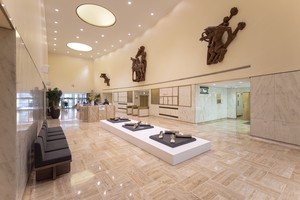
Walter De Maria, Truth / Beauty, 1993–2016, installation view, Frieze Sculpture New York, 2019. Artwork © 2019 Estate of Walter De Maria. Photo: Timothy Schenck, courtesy Timothy Schenck/Frieze
WAHow many works did you place indoors?
BLThere are four works that are placed indoors. In total, across the campus, there are twenty works by fourteen artists. One of the indoor placements is a part of Walter De Maria’s Truth / Beauty [1993–2016], a work that I’ve been thinking about for a long time. During one of my many visits, the white marble lobby of 1 Rockefeller Plaza, which includes Carl Milles’s Man and Nature [1941], really caught my attention. I loved the poetic relationship of having Man, Nature, Truth, and Beauty all together in one room. One could conceivably read more connections between Milles’s and De Maria’s works, but for me it was more about the location, the aesthetics of that lobby.
WAWere any of the works specifically commissioned for this presentation?
BL Yes, there is one commissioned work, and it will likely be one of the more controversial installments. One day I was doing a walk-through with the Rockefeller Center team, and I pointed up to the flagpoles surrounding the ice-skating rink and said, “Oh, can I use these?” I was thinking about the many artists who make flags. To my surprise, they said, “Sure, you can use them.” So I commissioned Ibrahim Mahama, an incredible artist from Ghana, to make a work using these flagpoles. He has made fifty flags out of jute sacks used to transport cocoa beans, and these will replace the flags of the United Nations countries that are normally there. It’s going to truly change the landscape of Rockefeller Center. It’s a pretty stark comment about the globalization of the economy, the slave trade, and the history of jute as a material for packaging and carrying things and how those types of economies are moved forward in third world countries. I’m really excited about that project, though I have no idea how people will react. They may be very disappointed when they don’t see their country’s flag up. But my goal with some of these works was to make people stop and think about the environment that they’re in a little bit more, and I think Ibrahim’s work will certainly do that.
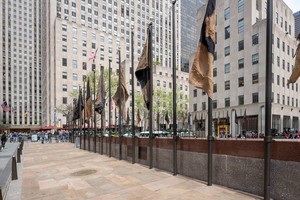
Ibrahim Mahama, Untitled, 2019, presented by White Cube Gallery, installation view, Frieze Sculpture New York, 2019. Photo: Timothy Schenck, courtesy Timothy Schenck/Frieze
WAHow does curating a sculpture show, particularly a public sculpture presentation like this one, differ from curating a gallery exhibition of two-dimensional work?
BlThere’s a huge difference. When you’re dealing with flat works, you’re often telling a more linear story in the presentation. Here I’m telling a three-dimensional story; a lot of my placements are thinking about the sculpture’s relationship to its environment. Noguchi was not someone who felt you could just haphazardly put a sculpture outside, and I took this approach to heart. Every placement is in conversation with an existing sculptural or architectural aspect of Rockefeller Center. I’m also thinking about a more general public. In the placements of the works, I’m forcing the public to move around; you cannot see everything from one place.

Jaume Plensa, Behind the Walls, 2019, installation view, Frieze Sculpture New York, 2019. Artwork © Jaume Plensa Studio, courtesy the artist and Richard Gray Gallery. Photo: Christopher Burke Studio
WATell me about the Jaume Plensa work you’ve included. It is by far the largest work in the show, nearing the monumental, which you mentioned was something you aimed to avoid in general.
BLYes, it is a monumental sculpture, at least in terms of scale. I had to give it a lot of thought, but at the end of the day this image, which is of a woman with her hands over her eyes, was so potent and powerful. Given the world that we’re currently living in, it is very much the way I’ve felt every morning upon waking up. And due to its size and placement, the piece is like a beacon; it will likely be the first thing that people see as they enter the space, or perhaps the thing they see on their way out.
WAYou’ll be curating next year, as well: any takeaways from this initial experience?
BLIt’s a pretty crazy project that we’ve put together in a very short amount of time. I’m really pleased with the list of artists we’re able to show, and I hit most of my own internal goals. It’s great that I’ll have another opportunity next year. With the additional time to conceptualize, I may decide to make a more thematic exhibition for 2020.
Frieze Sculpture New York, Rockefeller Center, New York, April 25–June 28, 2019
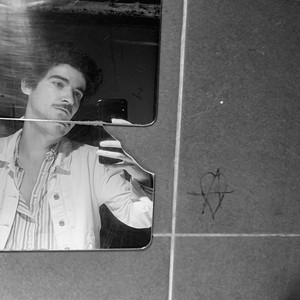
Wyatt Allgeier is a writer and an editor for Gagosian Quarterly. He lives and works in New York City.

Brett Littman is the director of the Isamu Noguchi Foundation and Garden Museum, Long Island City. He has contributed news and commentary to a wide range of international art publications and critical essays to many exhibition catalogues. Photo: Don Stahl

Francine Prose ruminates on temporality, fragility, and strength following a visit to Sarah Sze’s exhibition Timelapse at the Solomon R. Guggenheim Museum, New York.
In this video, Sarah Sze elaborates on the creation of her solo exhibition Timelapse, on view through September 10, 2023. The show features a series of site-specific installations throughout the Solomon R. Guggenheim Museum, New York, that explore her ongoing reflection on how our experience of time and place is continuously reshaped in relationship to the constant stream of objects, images, and information in today’s digitally and materially saturated world. In Sze’s reimagination of the Guggenheim’s iconic architecture, designed in the 1940s by Frank Lloyd Wright, the building becomes a public timekeeper reminding us that timelines are built through shared experience and memory.

The Winter 2022 issue of Gagosian Quarterly is now available, featuring Anna Weyant’s Two Eileens (2022) on its cover.
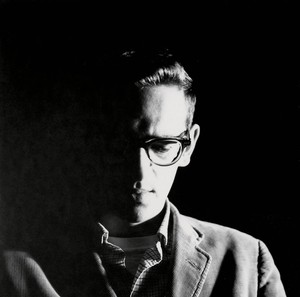
The definitive monograph on the work of Walter De Maria was published earlier this fall. To celebrate this momentous occasion, Elizabeth Childress and Michael Childress of the Walter De Maria Archive talk to Gagosian senior director Kara Vander Weg about the origins of the publication and the revelations brought to light in its creation.
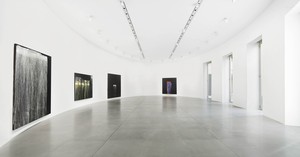
On the occasion of her exhibition of recent paintings, presented at Gagosian in Rome, Pat Steir met with fellow artist Sarah Sze for a wide-ranging discussion—from shared inspirations and influences to the role of chance, contingency, place, and time in painting.
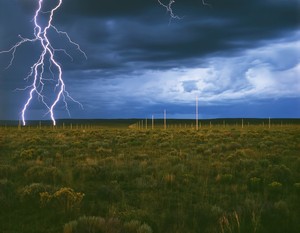
In this second installment of a two-part essay, John Elderfield resumes his investigation of Walter De Maria’s The Lightning Field (1977), focusing this time on how the hope to see lightning there has led to the work’s association with the Romantic conception of the sublime.
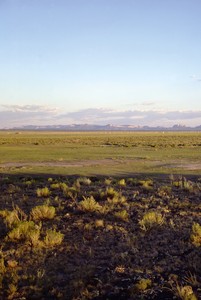
In the first of a two-part feature, John Elderfield recounts his experiences at The Lightning Field (1977), Walter De Maria’s legendary installation in New Mexico. Elderfield considers how this work requires our constantly finding and losing a sense of symmetry and order in shifting perceptions of space, scale, and distance, as the light changes throughout the day.

The Spring 2021 issue of Gagosian Quarterly is now available, featuring Gerhard Richter’s Helen (1963) on its cover.

Sarah Sze writes on a recent collage.
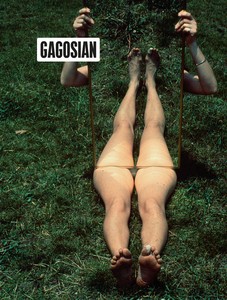
The Summer 2020 issue of Gagosian Quarterly is now available, featuring Joan Jonas’s Mirror Piece 1 (1969) on its cover.
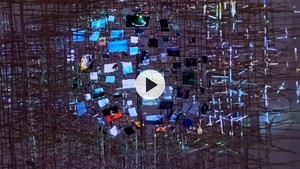
Hear Sarah Sze speak about her most recent work, including the panel painting Picture Perfect (Times Zero) and the multimedia installation Plein Air (Times Zero) (both 2020). Discussing the relationship between painting and sculpture in her practice, she explains how she creates structure and its inverse, instability, in her layering of images, putting the viewer in the position of active discovery.

Sarah Sze writes about five films that live as richly evocative images in her visual memory.